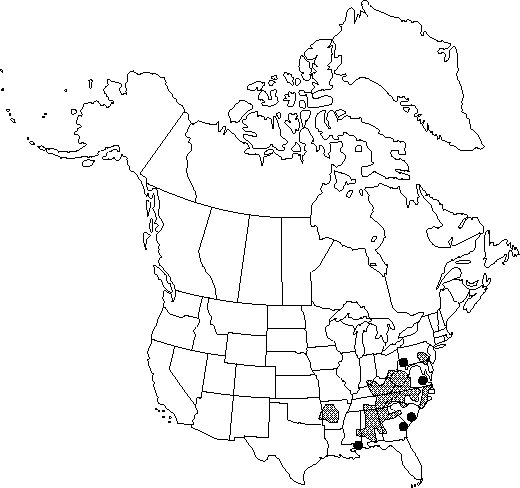Difference between revisions of "Magnolia tripetala"
Syst. Nat. ed. 10, 2: 1082. 1759.
FNA>Volume Importer |
FNA>Volume Importer |
||
| Line 15: | Line 15: | ||
|name=Magnolia virginiana var. (d) | |name=Magnolia virginiana var. (d) | ||
|authority=Linnaeus | |authority=Linnaeus | ||
| + | |rank=variety | ||
|publication_title=Sp. Pl. | |publication_title=Sp. Pl. | ||
|publication_place=1: 536. 1753 | |publication_place=1: 536. 1753 | ||
| Line 21: | Line 22: | ||
|name=Kobus tripetala | |name=Kobus tripetala | ||
|authority=(Linnaeus) P. Parmentier | |authority=(Linnaeus) P. Parmentier | ||
| + | |rank=species | ||
}} {{Treatment/ID/Synonym | }} {{Treatment/ID/Synonym | ||
|name=Magnolia frondosa | |name=Magnolia frondosa | ||
|authority=Salisbury | |authority=Salisbury | ||
| + | |rank=species | ||
}} {{Treatment/ID/Synonym | }} {{Treatment/ID/Synonym | ||
|name=Magnolia umbrella | |name=Magnolia umbrella | ||
|authority=Desrousseaux | |authority=Desrousseaux | ||
| + | |rank=species | ||
}} {{Treatment/ID/Synonym | }} {{Treatment/ID/Synonym | ||
|name=Magnolia umbrella var. tripetala | |name=Magnolia umbrella var. tripetala | ||
|authority=(Linnaeus) P.Parmentier | |authority=(Linnaeus) P.Parmentier | ||
| + | |rank=variety | ||
}} | }} | ||
|hierarchy=Magnoliaceae;Magnolia;Magnolia tripetala | |hierarchy=Magnoliaceae;Magnolia;Magnolia tripetala | ||
| Line 56: | Line 61: | ||
-->{{#Taxon: | -->{{#Taxon: | ||
name=Magnolia tripetala | name=Magnolia tripetala | ||
| − | |||
|authority=(Linnaeus) Linnaeus | |authority=(Linnaeus) Linnaeus | ||
|rank=species | |rank=species | ||
| Line 71: | Line 75: | ||
|publication year=1759 | |publication year=1759 | ||
|special status=Endemic | |special status=Endemic | ||
| − | |source xml=https://jpend@bitbucket.org/aafc-mbb/fna-data-curation.git/src/ | + | |source xml=https://jpend@bitbucket.org/aafc-mbb/fna-data-curation.git/src/f50eec43f223ca0e34566be0b046453a0960e173/coarse_grained_fna_xml/V3/V3_455.xml |
|genus=Magnolia | |genus=Magnolia | ||
|species=Magnolia tripetala | |species=Magnolia tripetala | ||
Revision as of 21:28, 16 December 2019
Trees, deciduous, often multitrunked, to 15 m. Bark gray, smooth. Pith homogeneous. Twigs and foliar buds glabrous. Leaves crowded in terminal whorl-like clusters; stipules (4-)6.6-9.4(-10) × 2.6-3.7 cm, abaxially red glandular, sparsely pilose. Leaf blade elliptic-oblong to narrowly obovate, or oblanceolate, (10-)26-57(-70) × (7.2-)10-30 cm, thin, broadest near middle, base cuneate to long-tapered, apex very short to long-acuminate or abruptly acute, rarely apiculate; surfaces abaxially densely pilose, especially on midvein, adaxially green, glabrous. Flowers malodorous, 5.5-11 cm across; spathaceous bracts 2, abaxially glandular; tepals spreading, creamy white, outermost whorl sepaloid, reflexed, greenish; stamens 81-103(-115), 8-17 mm; filaments purple; pistils (45-)53-66(-73). Follicetums cylindric to ovoid-cylindric, 6-10 × 2-3.5 cm; follicles long-beaked, glabrous. Seeds lenticular to nearly ovoid, 9-12 mm, aril deep pink to red. 2n=38.
Phenology: Flowering spring.
Habitat: Rich woods and ravines, mainly in uplands, rarely coastal plain
Elevation: 0-1065m
Distribution

Ala., Ark., Fla., Ga., Ind., Ky., Md., Miss., N.C., Ohio, Okla., Pa., S.C., Tenn., Va., W.Va.
Discussion
In Virginia Magnolia tripetala is a disjunct in the coastal plain.
The malodorous flowers of Magnolia tripetala are uniquely associated with this species. The tree is occasionally cultivated. Both filiform and flagelliform trichomes occur on the leaves. Sometimes cylindric trichomes also occur.
The largest known tree of Magnolia tripetala, 15.2m in height with a trunk diameter of 87 cm, is recorded from Bucks County, Pennsylvania (American Forestry Association 1994).
Selected References
None.